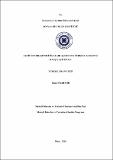Please use this identifier to cite or link to this item:
http://hdl.handle.net/11547/5285Full metadata record
| DC Field | Value | Language |
|---|---|---|
| dc.contributor.author | Özdemir, Fikret | - |
| dc.date.accessioned | 2020-01-10T07:36:13Z | - |
| dc.date.available | 2020-01-10T07:36:13Z | - |
| dc.date.issued | 2019-04 | - |
| dc.identifier.uri | http://hdl.handle.net/11547/5285 | - |
| dc.description.abstract | ĠĢsizlik veya istihdam sorunu, tüm dünyada gündemden düĢmeyen sorunların en baĢında gelmektedir. Bütün devletlerin ve hükümetlerin en önemli programlarını istihdam politikaları oluĢturmaktadır. Çünkü iĢsizlik oranları, hükümet değiĢtirebilen verilerdir. Her ülkenin kendine özgü istihdam politikaları vardır; ancak günümüzde iĢsizlik ülkelerin kendi baĢına çözebileceği sorunlardan değildir. Aktif istihdam politikaları, G-20 ülkelerinin gündeminde son 10 yıldır daha fazla yer almaya baĢlamıĢtır. GeliĢmiĢ ülkelerin ekonomileri, dünya ekonomisinin % 83‟ünü kapsamaktadır. “Aktif istihdam politikaları” kavramı, Ġkinci Dünya SavaĢı‟ndan sonra Ġsveç‟te iĢsizliği azaltmak ve enflasyonu kontrol alma politikaları uygulamalarında kullanılmıĢtır. 1960‟lı yıllardan sonra ise Ekonomik ĠĢbirliği ve Kalkınma Örgütü (OECD), aktif istihdam politikalarını iĢgücü piyasası politikaları bünyesinde değerlendirmiĢtir. Avrupa ülkelerinde kısa sürede yaygınlaĢan aktif veya tam istihdam politikalarının amacı; iĢgücü ve istihdamı artırmak, arz, talep, emek, meslek, sektör, iĢyeri bölgesi gibi kavramları birbirleri ile uyumlu hale getirmektedir. Ġlk ortaya atıldığı yıllarda bu politikalar her ne kadar siyasilerin ve ekonomi çevrelerinin ilgisini çekmese de 1980‟li yıllarda artmaya baĢlayan küresel iĢsizlik, hükümetleri ekonomi programlarında aktif istihdam politikalarını dikkate almaya zorlamıĢtır. Bu bağlamda çalıĢmam kapsamında ekonomi politikaları ve sorunlarının çözümü için önemli bir olgu olan aktif istihdam politikası araçlarının rolü ve iĢleyiĢi ele alınmaya çalıĢılmıĢ ve Almanya modelini ele alarak Türkiye ve Almanya hükumetlerinin istihdam politikaları karĢılaĢtırılmıĢtır. | tr_TR |
| dc.language.iso | tr | tr_TR |
| dc.publisher | İSTANBUL AYDIN ÜNİVERSİTESİ SOSYAL BİLİMLER ENSTİTÜSÜ | tr_TR |
| dc.subject | İstihdam | tr_TR |
| dc.subject | Aktif İstihdam Politikası | tr_TR |
| dc.subject | Almanya | tr_TR |
| dc.subject | Türkiye | tr_TR |
| dc.subject | İşsizlik | tr_TR |
| dc.subject | Employment | tr_TR |
| dc.subject | Active Employment Policy | tr_TR |
| dc.subject | Germany | tr_TR |
| dc.subject | Turkey | tr_TR |
| dc.subject | Unemployment | tr_TR |
| dc.title | AKTİF İSTİHDAM POLİTİKALARI AÇISINDAN TÜRKİYE ALMANYA KARŞILAŞTIRMASI | tr_TR |
| dc.type | Thesis | tr_TR |
| dc.description.abstractol | The problem of unemployment or employment is at the forefront of problems that are not falling on the agenda all over the world. Employment policies constitute the most important programs of all governments and governments. Because the rates of unemployment are the ones that can change the government. Each country has its own employment policies; but today unemployment is not a problem that countries can solve on their own. Active employment policies have begun to take place in the agenda of the G-20 countries for the last 10 years. Developed countries' economies cover 83% of the world economy. The concept of "active employment policies" was first used in Sweden shortly after World War II to reduce unemployment and to implement inflation control policies. After 1960, the Organization for Economic Co-operation and Development (OECD) assessed active employment policies in the context of labor market policies. The aim of active or full employment policies, which have become widespread in European countries, increasing the labor force and employment, making the concepts such as supply, demand, labor, profession, sector, workplace region compatible with each other. Although these policies have not attracted the attention of politicians and economic circles in the years they were first introduced, global unemployment which began to increase in the 1980s forced governments to take active employment policies into account in their economic programs. In this context, economic policies and the scope of my work is important in solving the problems that have attempted to evaluate the role of the intended active employment policy instruments and employment policies by addressing the German model was compared to the government of Turkey and Germany. | tr_TR |
| dc.publisher.firstpagenumber | 1 | tr_TR |
| dc.publisher.lastpagenumber | 103 | tr_TR |
| dc.identifier.bibliographictag | Özdemir, Fikret, AKTİF İSTİHDAM POLİTİKALARI AÇISINDAN TÜRKİYE ALMANYA KARŞILAŞTIRMASI(2019), İSTANBUL AYDIN ÜNİVERSİTESİ SOSYAL BİLİMLER ENSTİTÜSÜ | tr_TR |
| Appears in Collections: | Tezler -- Thesis | |
Files in This Item:
| File | Description | Size | Format | |
|---|---|---|---|---|
| 10244778.pdf | 1.72 MB | Adobe PDF |  View/Open |
Items in DSpace are protected by copyright, with all rights reserved, unless otherwise indicated.
